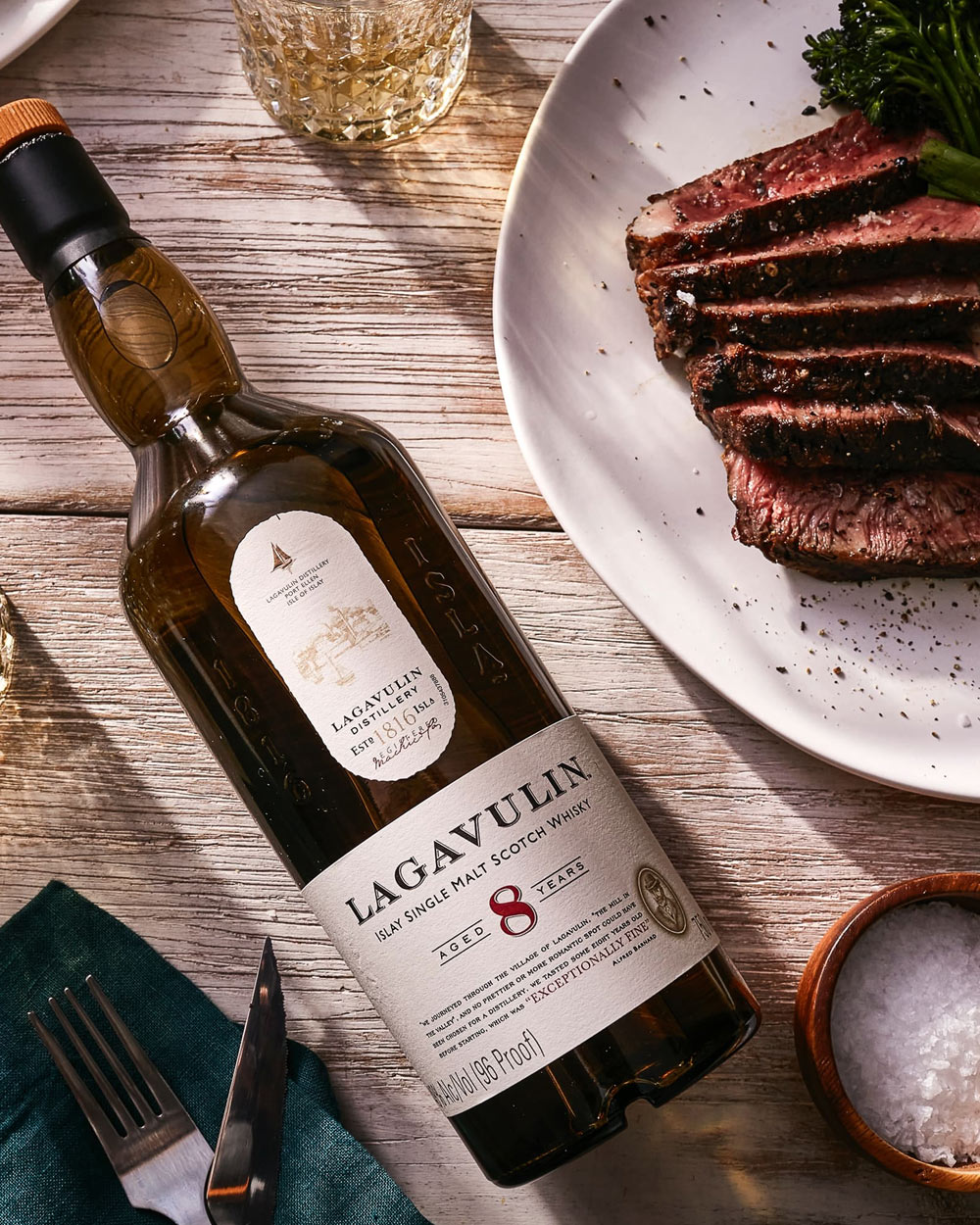“Los Mangos was a mango orchard before it was an agave field,” explains Jesse Estes, Global Brand Ambassador for Tequila Ocho, a “Highland” tequila. “People consistently taste tropical fruit and mangoes in blind tastings. Is this from years of growing mangoes in the field? I can’t say for certain, but it could be.”
The word terroir, meaning ‘of the earth,’ is thrown about casually in wine circles to describe the influence of soil types, climatic structure, and historical viticulture on a wine’s flavor. While the idea of terroir is mostly undisputed amongst vintners, its acceptance in the spirits world is slightly more controversial. Skeptics contend that terroir in grains is stripped in the distillation process or that there are so many factors contributing to a spirit’s flavor that terroir’s role becomes lost. Proponents of terroir in spirits are convinced terroir is every bit as wine, and many hold up tequila as proof.
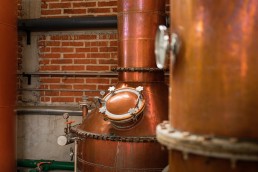
A Tale of Two Tequilas
For the uninitiated, tequila is a spirit that’s made from a minimum of 51% Agave tequilana, or Blue Weber agave. By law, the farming and distillation of said agave, called maguey in Mexico, occurs in a “Designation of Origin (D.O.),” similar to Champagne in France. Tequila’s D.O. is a massive region primarily residing in Jalisco, stretching from the Pacific Ocean to the Sierra Madre Occidental mountains.
Tequila has endured an arguably well-deserved image problem for decades. Before high quality, 100% agave tequila gained popularity in the States, the vast majority was industrially produced “mixto” tequila whose agave is cut with “other” alcohol and often artificially colored. Having become synonymous with a cheap shot, it took 20 years for the industry to rebuild tequila’s reputation as a world-class spirit. Industry players began making a distinction between “the good stuff,” meaning 100% agave tequila, and inexpensive mixtos, then took a page from Scotland’s playbook by dividing flavor profiles into “terroir” buckets: Lowlands and Highlands.
Mountains and Valleys
The Highlands, called Los Altos, is a plateau to the northeast of Jalisco’s capital, Guadalajara, with an average elevation of 7,500 feet above sea level. West of the city is the Lowlands, sitting between 3,500 to 5,200 feet. Technically the idea of high and low is a red herring, both of these regions are high in altitude. But their soil is quite different. The ground of Los Altos called Tierra Roja is clay-rich earth with high iron content, imparting a deep red hue. In the Valley is Volcán de Tequila, a dark black, mineral-rich dirt largely comprised of volcanic soil called Tierra Negra. It’s generally accepted that Highland grown agave, which endures higher stress and closer proximity to sunlight than its Valley counterpart, makes sweeter, fruitier tequila. Valley-raised agave’s flavor profile is more earthy, spicy, and herbal. While Tierra Roja and Tierra Negra’s distinctions might contribute to different tasting tequilas, it also makes stellar marketing copy. Khrys Maxwell, Director of Tequila and Agave Distillates at the Museum of Distilled Spirits, points out that Highland and Lowland distinctions started when big-box Highland-based brands used the difference to raise their own profile.
“Terroir in tequila was started by Patrón and Don Julio over 20 years ago,” Maxwell asserts. “We have the Highlands, and then we have Looowlands, which has a negative context. Los Altos translates to Highlands and el Valle translates to the Valley, not Lowlands.”
Production in the Tequila region began in El Valle when Jose Cuervo arrived in 1758. As the industry expanded, agave fields made their way into the mountains. For this reason, a relatively few large companies like Sauza and José Cuervo hold a vast majority of Valley land. Jesse Estes points out that Tequila Ocho distiller Carlos Camarena’s family first planted Blue Weber Agave in the Highlands in the 1880s. There’s more supply in the Highlands because there is simply more space.
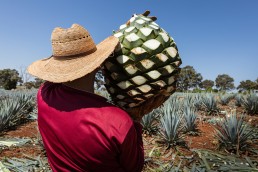
Rise of Mexico’s Spirit
Just because the idea of terroir was somewhat exploited by marketers doesn’t mean it doesn’t exist. However, the juice that ends up in most tequilas becomes a little more complicated. Many producers add small amounts of flavoring and coloring like sugar or vanillin, which will skew any proper terroir experiment. And just because tequila is made either in the Highlands or Lowlands, relatively few estate tequilas are distilled from agaves grown in one place. The Distilled Council of the United States (DISCUS) reports that tequila sales have increased 100% since 2010, selling over 22 million cases last year. With world consumption at record levels, demand for Blue Weber means escalating prices and limited supply. The vast majority of tequila producers purchase agave on the open markets, where the priority is finding the most fruit for the lowest price, regardless of the region. Even traditional and well-respected Valley-rooted estate tequilas have occasionally been forced to turn to the open market when their supply fell short.
When you combine these business realities, it’s clear that exploring a specific influence of tequila’s terroir in a controlled setting is challenging. But its not impossible. Consumer’s fascination with tequila compels artisanal producers to create small-batch tequilas focused on terroir so you can discover for yourself how an agave’s terroir influences its ultimate flavor. Here are a couple of Highland and Lowland terroir focused tequilas.
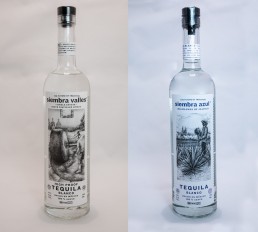
Siembra Azul (Highlands); Siembra Valles (El Valle)
Vitals:
Siembra is the brainchild of David Suro, an advocate and founder of the Tequila Interchange Project, an organization devoted to assuring its long-term health. Suro’s signature line, Siembra Azul, is made in the Highlands at Feliciano Vivanco y Asociados Distillery from agaves grown in small orchards that have been in the Vivanco family for three generations. Siembra Valles Ancestral is a limited bottling of a Valley-born tequila distilled at Cascahuin Distillery in El Arenal, Jalisco: the Lowlands. Producing Siembra Valles begins with local agave cooked in earthen pit ovens and open-air fermented with natural yeast and bagasse, fibrous material from sugarcane. If you can find a better comparison of terroir-driven Highland vs. Valley characteristics, we’d love to know about it.
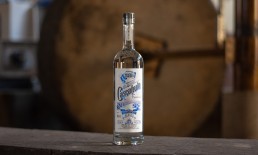
Cascahuin Blanco Tahona
Region: The Valley
Vitals: 80 Proof (42% ABV)/$TK
Cascahuin, founded by Salvador Rosales Briseño in 1955 in El Arenal, Jalisco, checks all the boxes when looking for a pure, Valley tequila. Their Cascahuin Blanco Tahona is made with locally grown agave that’s slowly roasted in a stone oven, crushed with a traditional tahona wheel, and distilled in a stainless steel pot still. Fans of Cascahuin swear their beloved Blanco expression captures perhaps the finest example of classic Valley grown agave. Look for a sweet, spicy, and grassy nose followed by distinct mineral flavors backed up with cooked agave and black pepper.
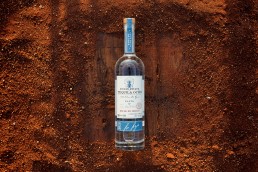
Tequila Ocho Single Estate Plata
Region: Highlands
Vitals: 80 Proof (42% ABV)/$TK
Tequila Ocho is a Highland-based estate tequila that has always focused on terroir. Each single-estate bottling is labeled by the rancho in which its agave was grown. From there, Ocho is produced utilizing traditional methods at La Alteña Distillery by legendary distiller Carlos Camarena. Look for bottles from single estates like Los Fresnos and El Carrizal to explore for yourself the effects micro-terroir has on a tequila.
“Los Mangos was a mango orchard before it was an agave field,” explains Jesse Estes, Global Brand Ambassador for Tequila Ocho, a “Highland” tequila. “People consistently taste tropical fruit and mangoes in blind tastings. Is this from years of growing mangoes in the field? I can’t say for certain, but it could be.”
The word terroir, meaning ‘of the earth,’ is thrown about casually in wine circles to describe the influence of soil types, climatic structure, and historical viticulture on a wine’s flavor. While the idea of terroir is mostly undisputed amongst vintners, its acceptance in the spirits world is slightly more controversial. Skeptics contend that terroir in grains is stripped in the distillation process or that there are so many factors contributing to a spirit’s flavor that terroir’s role becomes lost. Proponents of terroir in spirits are convinced terroir is every bit as wine, and many hold up tequila as proof.
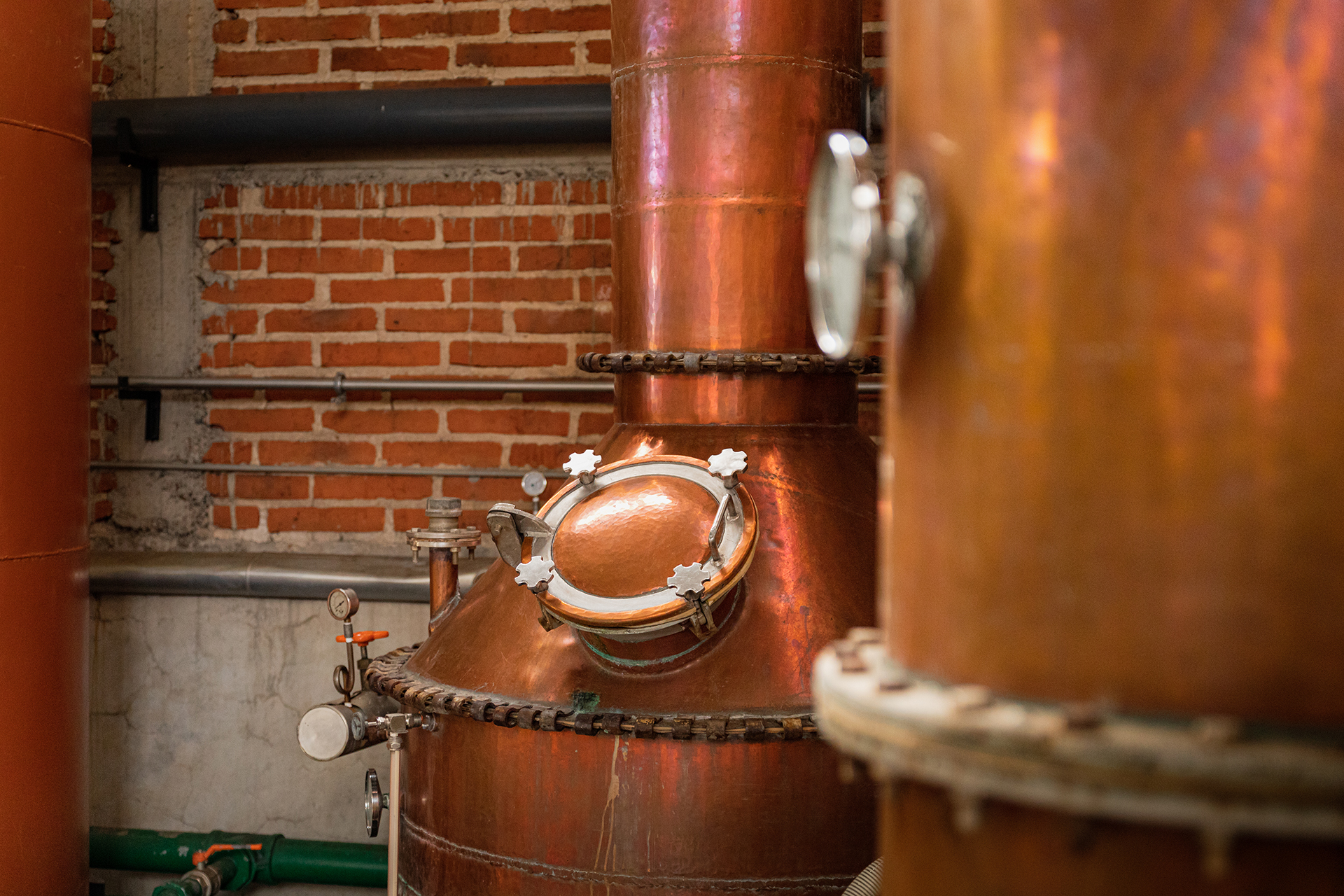
A Tale of Two Tequilas
For the uninitiated, tequila is a spirit that’s made from a minimum of 51% Agave tequilana, or Blue Weber agave. By law, the farming and distillation of said agave, called maguey in Mexico, occurs in a “Designation of Origin (D.O.),” similar to Champagne in France. Tequila’s D.O. is a massive region primarily residing in Jalisco, stretching from the Pacific Ocean to the Sierra Madre Occidental mountains.
Tequila has endured an arguably well-deserved image problem for decades. Before high quality, 100% agave tequila gained popularity in the States, the vast majority was industrially produced “mixto” tequila whose agave is cut with “other” alcohol and often artificially colored. Having become synonymous with a cheap shot, it took 20 years for the industry to rebuild tequila’s reputation as a world-class spirit. Industry players began making a distinction between “the good stuff,” meaning 100% agave tequila, and inexpensive mixtos, then took a page from Scotland’s playbook by dividing flavor profiles into “terroir” buckets: Lowlands and Highlands.
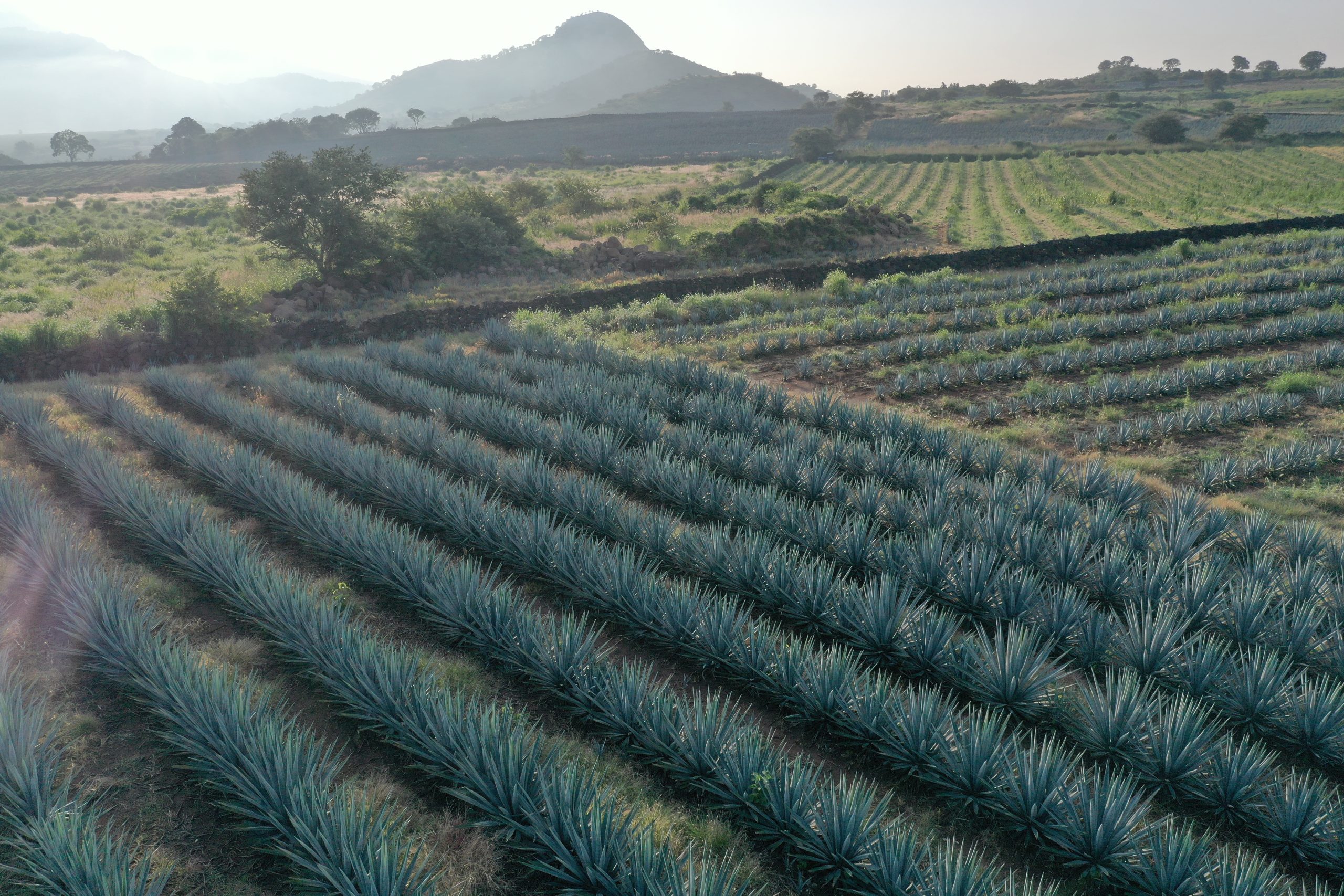
Mountains and Valleys
The Highlands, called Los Altos, is a plateau to the northeast of Jalisco’s capital, Guadalajara, with an average elevation of 7,500 feet above sea level. West of the city is the Lowlands, sitting between 3,500 to 5,200 feet. Technically the idea of high and low is a red herring, both of these regions are high in altitude. But their soil is quite different. The ground of Los Altos called Tierra Roja is clay-rich earth with high iron content, imparting a deep red hue. In the Valley is Volcán de Tequila, a dark black, mineral-rich dirt largely comprised of volcanic soil called Tierra Negra. It’s generally accepted that Highland grown agave, which endures higher stress and closer proximity to sunlight than its Valley counterpart, makes sweeter, fruitier tequila. Valley-raised agave’s flavor profile is more earthy, spicy, and herbal. While Tierra Roja and Tierra Negra’s distinctions might contribute to different tasting tequilas, it also makes stellar marketing copy. Khrys Maxwell, Director of Tequila and Agave Distillates at the Museum of Distilled Spirits, points out that Highland and Lowland distinctions started when big-box Highland-based brands used the difference to raise their own profile.
“Terroir in tequila was started by Patrón and Don Julio over 20 years ago,” Maxwell asserts. “We have the Highlands, and then we have Looowlands, which has a negative context. Los Altos translates to Highlands and el Valle translates to the Valley, not Lowlands.”
Production in the Tequila region began in El Valle when Jose Cuervo arrived in 1758. As the industry expanded, agave fields made their way into the mountains. For this reason, a relatively few large companies like Sauza and José Cuervo hold a vast majority of Valley land. Jesse Estes points out that Tequila Ocho distiller Carlos Camarena’s family first planted Blue Weber Agave in the Highlands in the 1880s. There’s more supply in the Highlands because there is simply more space.
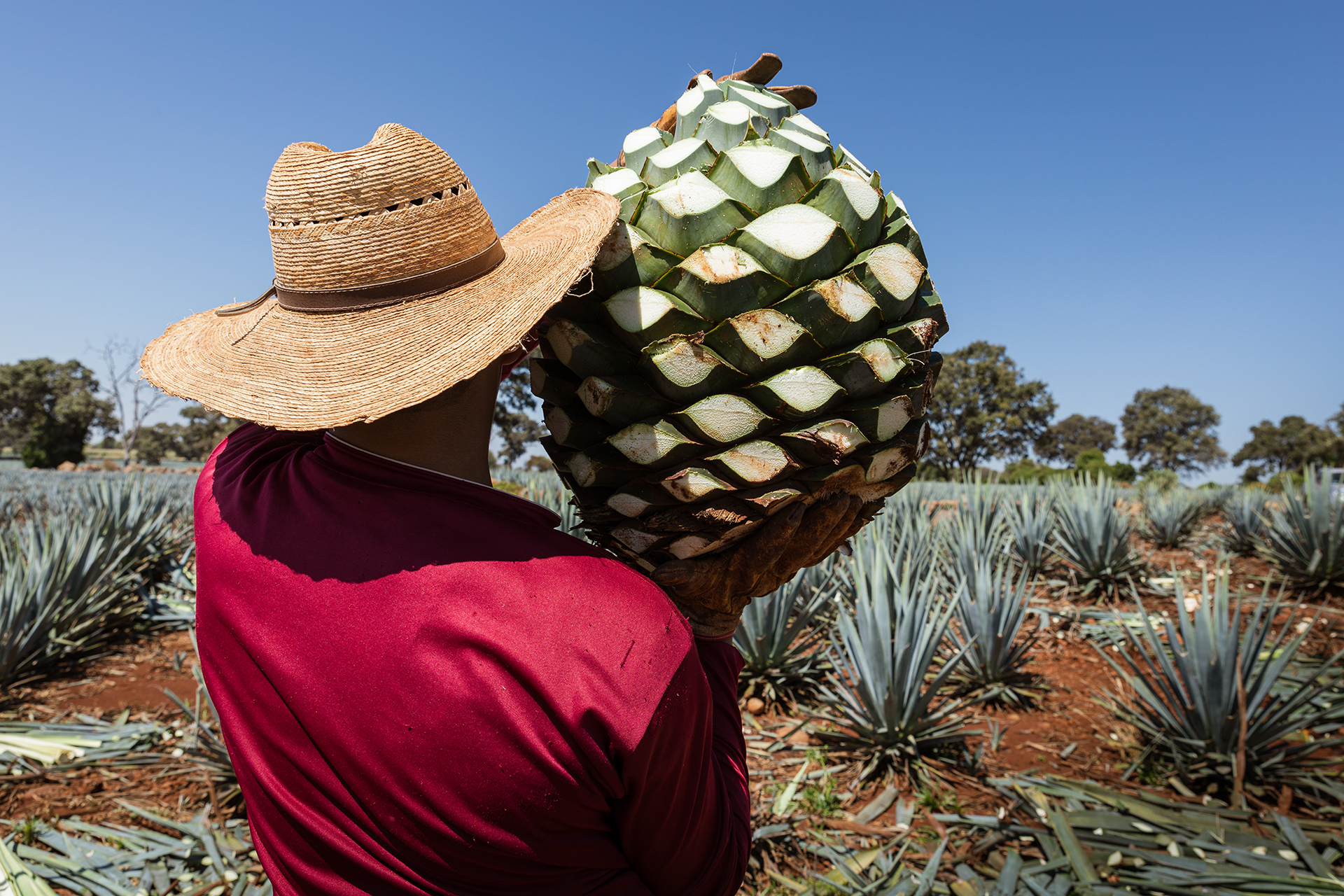
Rise of Mexico’s Spirit
Just because the idea of terroir was somewhat exploited by marketers doesn’t mean it doesn’t exist. However, the juice that ends up in most tequilas becomes a little more complicated. Many producers add small amounts of flavoring and coloring like sugar or vanillin, which will skew any proper terroir experiment. And just because tequila is made either in the Highlands or Lowlands, relatively few estate tequilas are distilled from agaves grown in one place. The Distilled Council of the United States (DISCUS) reports that tequila sales have increased 100% since 2010, selling over 22 million cases last year. With world consumption at record levels, demand for Blue Weber means escalating prices and limited supply. The vast majority of tequila producers purchase agave on the open markets, where the priority is finding the most fruit for the lowest price, regardless of the region. Even traditional and well-respected Valley-rooted estate tequilas have occasionally been forced to turn to the open market when their supply fell short.
When you combine these business realities, it’s clear that exploring a specific influence of tequila’s terroir in a controlled setting is challenging. But its not impossible. Consumer’s fascination with tequila compels artisanal producers to create small-batch tequilas focused on terroir so you can discover for yourself how an agave’s terroir influences its ultimate flavor. Here are a couple of Highland and Lowland terroir focused tequilas.
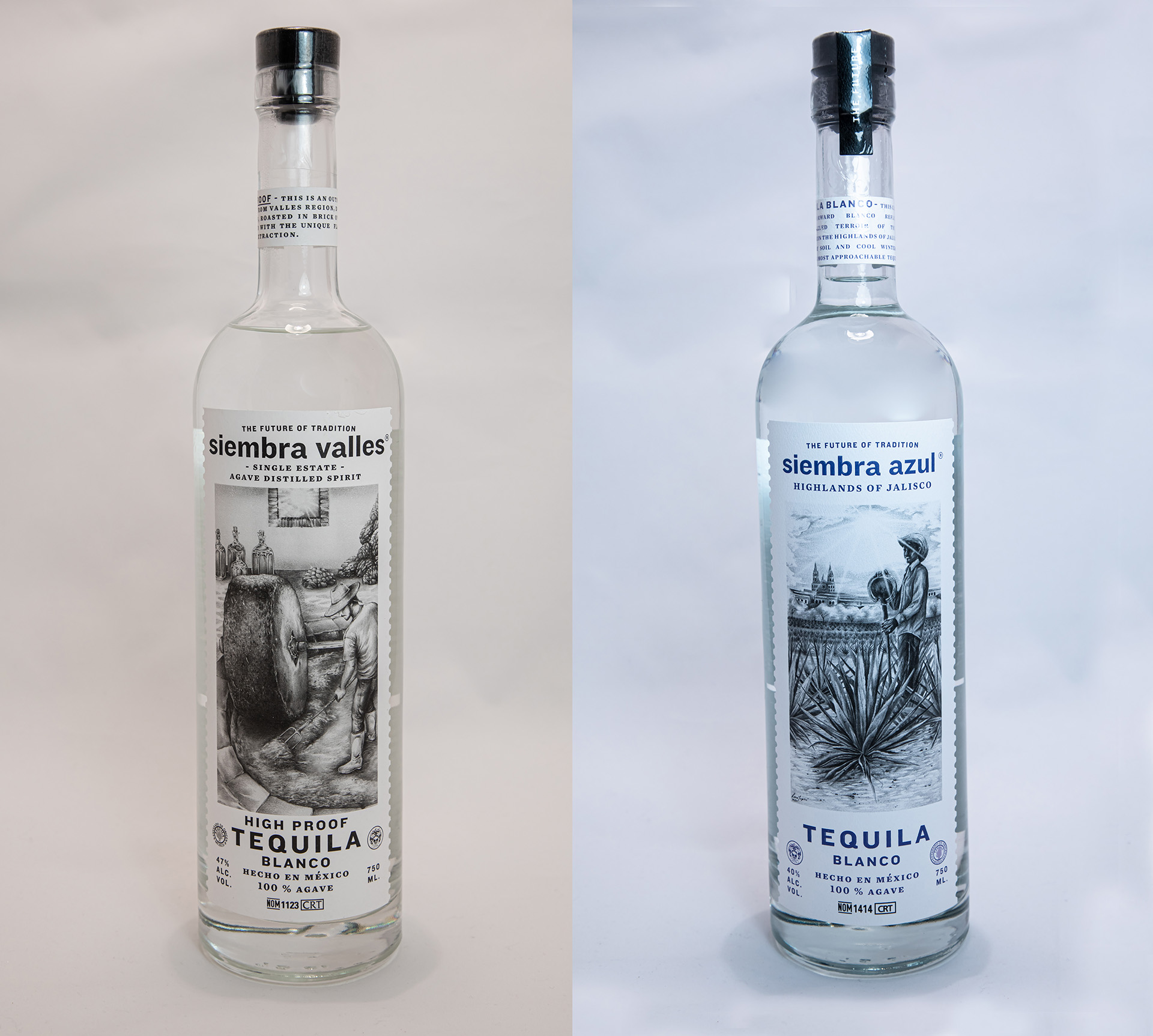
Siembra Azul (Highlands); Siembra Valles (El Valle)
Vitals: Add Proof/Price
Siembra is the brainchild of David Suro, an advocate and founder of the Tequila Interchange Project, an organization devoted to assuring its long-term health. Suro’s signature line, Siembra Azul, is made in the Highlands at Feliciano Vivanco y Asociados Distillery from agaves grown in small orchards that have been in the Vivanco family for three generations. Siembra Valles Ancestral is a limited bottling of a Valley-born tequila distilled at Cascahuin Distillery in El Arenal, Jalisco: the Lowlands. Producing Siembra Valles begins with local agave cooked in earthen pit ovens and open-air fermented with natural yeast and bagasse, fibrous material from sugarcane. If you can find a better comparison of terroir-driven Highland vs. Valley characteristics, we’d love to know about it.
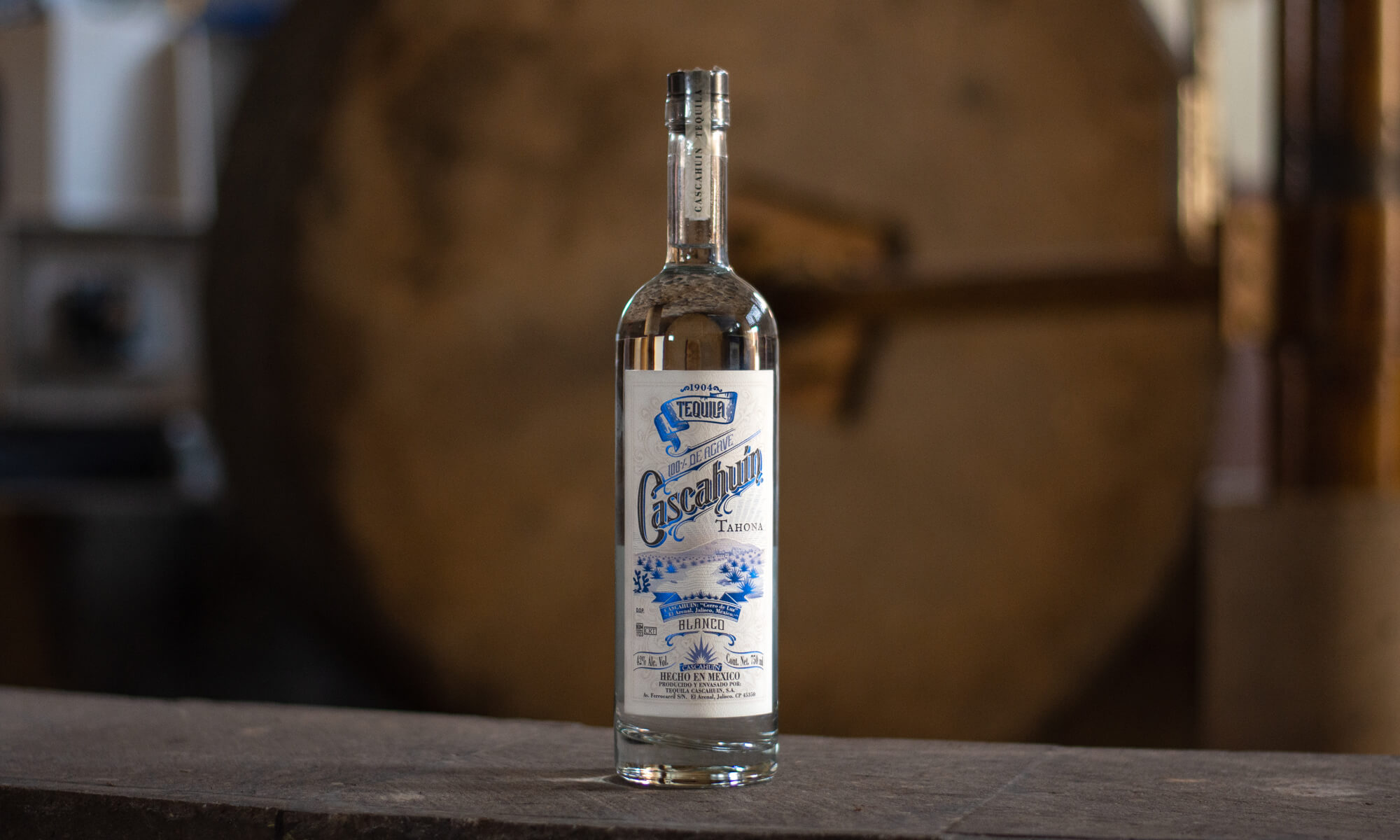 Cascahuin Blanco Tahona
Cascahuin Blanco Tahona
Region: The Valley
Vitals: 80 Proof (42% ABV)/$TK
Cascahuin, founded by Salvador Rosales Briseño in 1955 in El Arenal, Jalisco, checks all the boxes when looking for a pure, Valley tequila. Their Cascahuin Blanco Tahona is made with locally grown agave that’s slowly roasted in a stone oven, crushed with a traditional tahona wheel, and distilled in a stainless steel pot still. Fans of Cascahuin swear their beloved Blanco expression captures perhaps the finest example of classic Valley grown agave. Look for a sweet, spicy, and grassy nose followed by distinct mineral flavors backed up with cooked agave and black pepper.
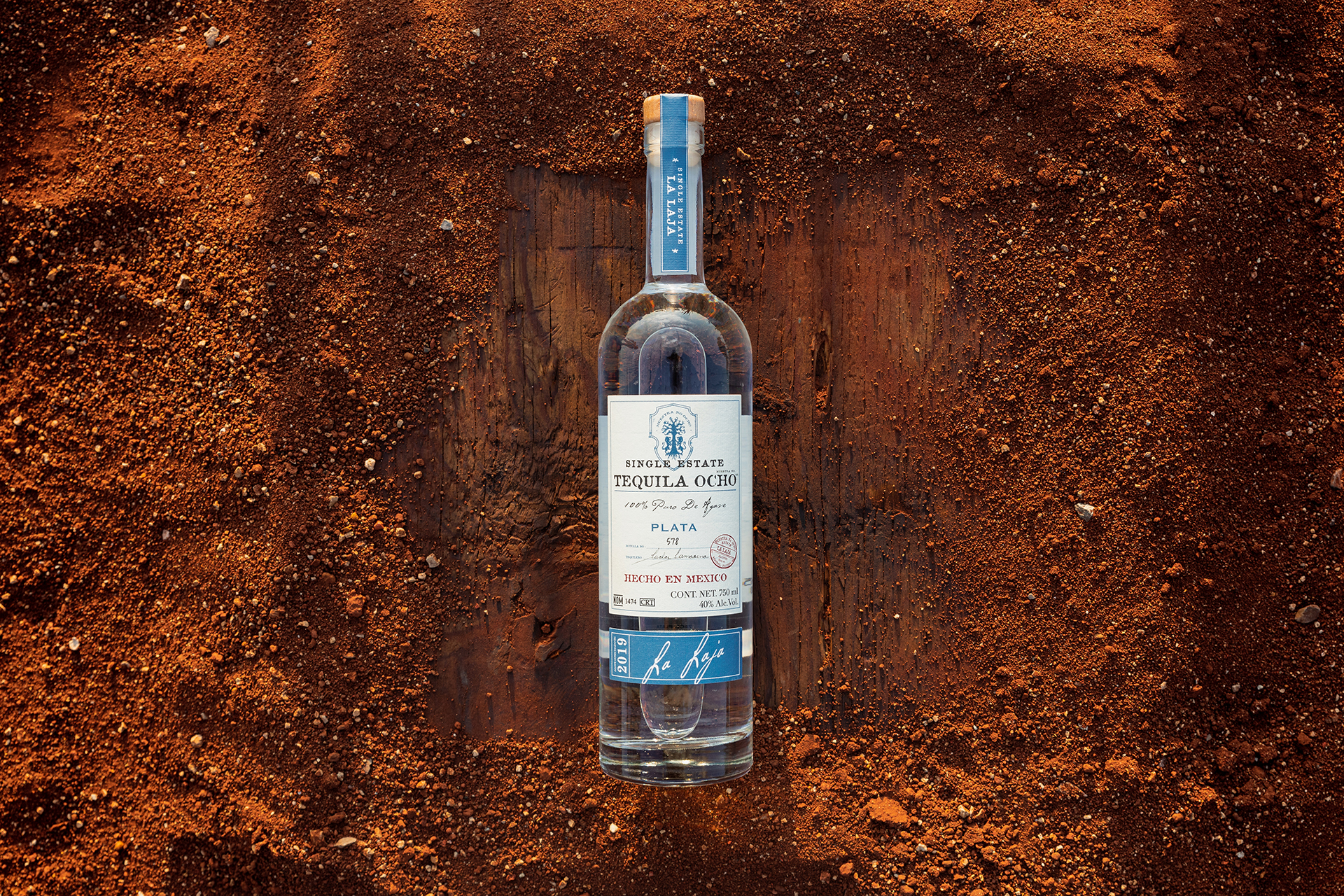
Tequila Ocho Single Estate Plata
Region: Highlands
Vitals: 80 Proof (42% ABV)/$TK
Tequila Ocho is a Highland-based estate tequila that has always focused on terroir. Each single-estate bottling is labeled by the rancho in which its agave was grown. From there, Ocho is produced utilizing traditional methods at La Alteña Distillery by legendary distiller Carlos Camarena. Look for bottles from single estates like Los Fresnos and El Carrizal to explore for yourself the effects micro-terroir has on a tequila.
“If we step outside of La Altena, tequilas made from agave grown in nearby Arandas agave have a distinctly different flavor profile,” says Jesse Estes. “This will be true of tequila produced in every town, so exploring terroir transcends Los Altos and El Valle. When we focus on what we are tasting, we can taste the town from which our agave was grown, a history of its land, and the techniques used by the people who made it.”
"If we step outside of La Altena, tequilas made from agave grown in nearby Arandas agave have a distinctly different flavor profile," says Jesse Estes. "This will be true of tequila produced in every town, so exploring terroir transcends Los Altos and El Valle. When we focus on what we are tasting, we can taste the town from which our agave was grown, a history of its land, and the techniques used by the people who made it."
— Jesse Estes, Global Brand Ambassador for Tequila Ocho
Rachel DelRocco Terrazas is Associate Editor at Wine & Spirits Magazine, where she oversees the tasting department and leads the spirits writing. Rachel is also an in-demand speaker and educator having presented at San Antonio Cocktail Conference, Bar Convent Brooklyn, and BevCon Charleston. She is a certified sommelier with the Court of Master Sommeliers and is pursuing the Level 3 Advanced of Wine & Spirits Education Trust.

